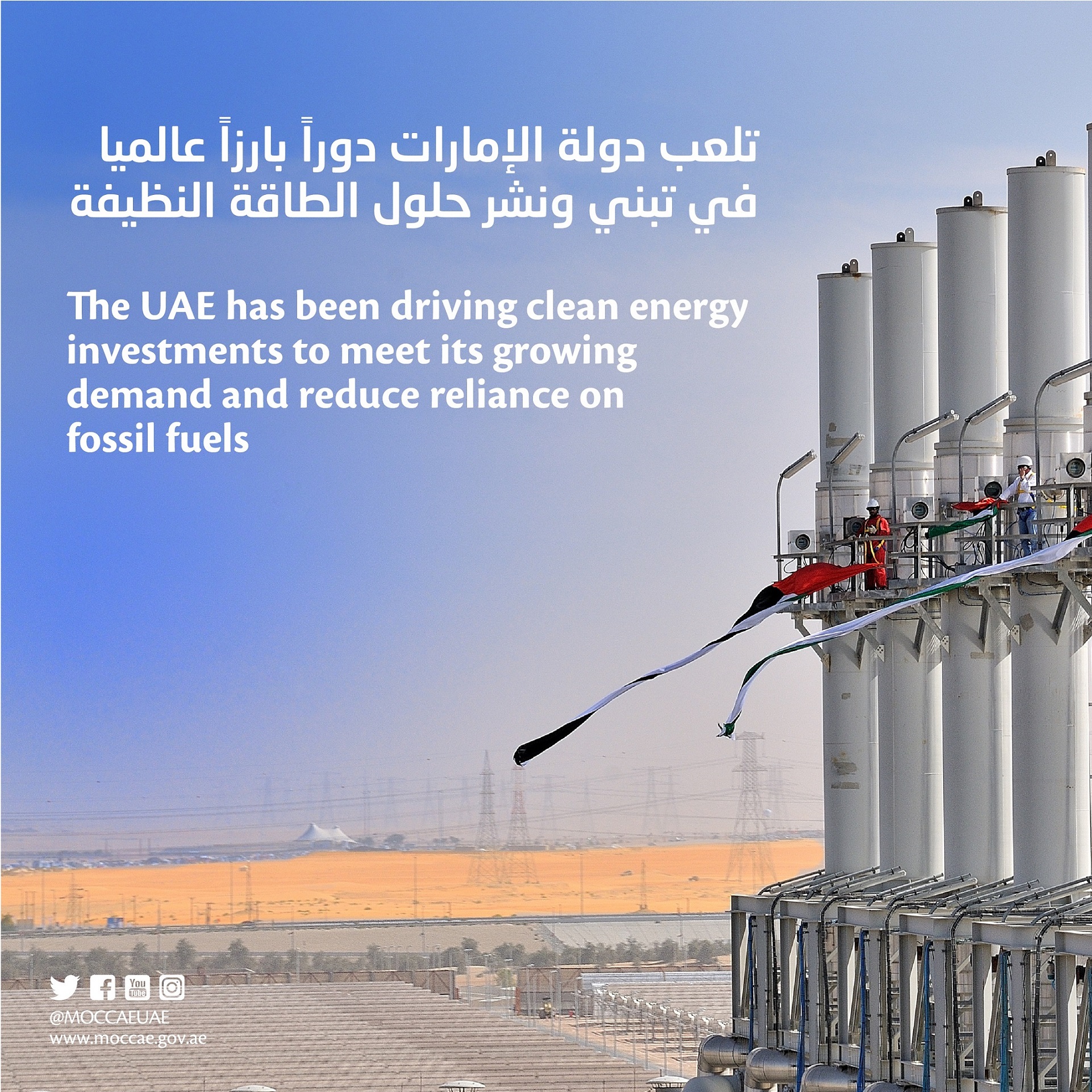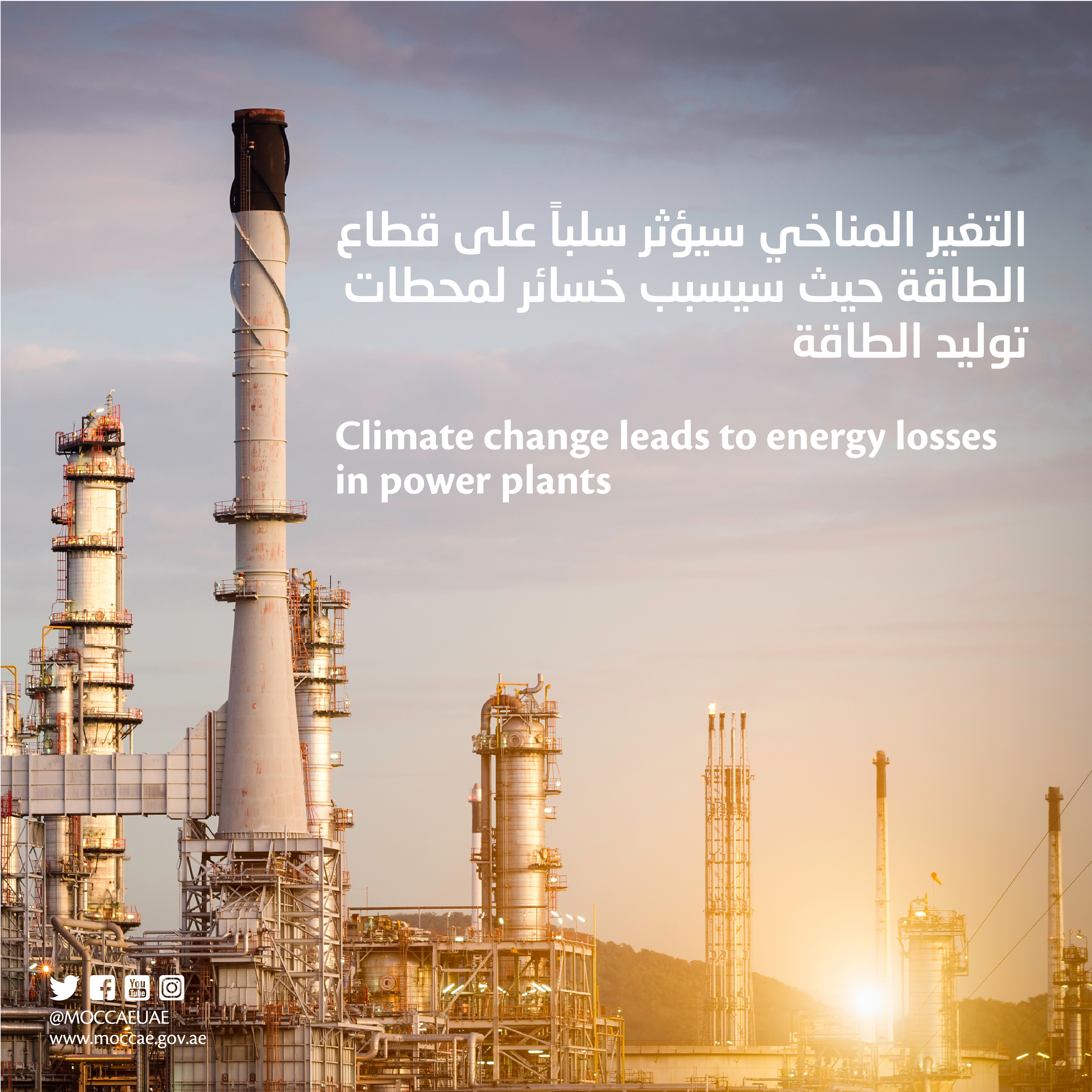Fahed Al Hammadi: Making the energy sector resilient to the impacts of climate change will require short- and long-term measures to reduce risks
by sallam sallam
Dubai-UAE
The Ministry of Climate Change and Environment (MOCCAE) has completed a comprehensive assessment of climate change risks to the energy sector in the UAE to help make the sector more resilient to future impacts of climate change. The assessment was carried out in line with the objectives of the National Climate Change Plan 2050
Through surveys, interviews, and stakeholder consultations, MOCCAE aimed to identify direct and indirect energy-related climate impacts as well as the existing and possible actionable solutions that may be implemented to address these impacts
Energy sector stakeholders, including the Ministry of Energy and Industry (MOEI), as well as representatives from the private sector contributed to the risk assessment exercise and shared their insights on the topic
Her Excellency Engineer Fatima Al Shamsi, Assistant Undersecretary for Electricity and Future Energy at MOEI, said: “The UAE Energy Strategy 2050 has set ambitious targets of 50 percent clean energy and 50 percent fossil fuel-based energy generation by 2050. Meeting these targets will drive the overall emissions from the power and water sector down by 70 percent compared to current levels. While this addresses the element of mitigation, the threat to the energy sector infrastructure is yet to be assessed. An important factor to keep in mind is the rising temperature of the planet that will only escalate the power demand in the peak summer months. The adaptation assessment by the Ministry of Climate Change and Environment is a good first step in addressing this challenge and provides a framework for discussion on climate change impacts and adaptation in our sector”
For his part, Fahed Al Hammadi, Acting Assistant Undersecretary of the Green Development and Climate Change Sector at MOCCAE, said: “Energy plays a crucial role in enabling economic progress and improving quality of life. The UAE’s energy sector is evolving from a hydrocarbon-dependent model into the one that comprises a more diversified mix in response to the growing energy demand, oil market volatility, and increased momentum for green growth. While considerable action has already been taken to reduce emissions across the energy sector, there is still much to be done to adapt the current energy systems to the impacts of climate change”
He added: “Making the energy sector resilient to the impacts of climate change will require short- and long-term measures to reduce risks. The good news is that coping with such risks can potentially open new opportunities to achieve sustainability. A careful consideration of the findings of the risk assessment and examination of current initiatives indicates that there are prospects for scaling up actions as well as for leveraging new and innovative approaches”
Based on the input from stakeholders, MOCCAE concluded that the impacts of climate change on the energy sector in the UAE are primarily seen in the form of efficiency losses in power plants when the temperature exceeds standard design criteria, or reduced power output due to the increase in the temperature of seawater used for cooling the plants. Extreme red tide events and salinity cases, as well as climate-induced deterioration of power facilities that lowers reliability while amplifying maintenance costs are also indicators of climate change
Experts also concluded that the majority of identified climate impacts on the energy sector are medium-level risks, including damage to coastal power infrastructure caused by sea level rise, destabilization of energy production infrastructure due to extreme events, increase of energy demand for cooling purposes due to global warming, increased energy demand for agriculture due to the use of energy-intensive methods, and increased incidents of partial or complete power outages due to the damage caused by extreme events
Although not considered as critical as the ‘high’ risks and thereby fairly acceptable in the short term, further investigation is necessary to implement control measures to continue to minimize the risks so that the ‘medium’ risks do not turn into ‘high’ risks
In order to address these risks, according to the assessment findings, both the supply and demand sides of the energy equation will require intervention. In general, design standards for power plants should not just factor in historical climate data but also consider anticipated climatic changes in the future. Only through doing so can they minimize losses of efficiency in power generation and prevent power outages
Other elements that will strengthen the overall resilience of the energy sector include modernization of systems, expansion of smart grids and transformers, risk insurance schemes, and emergency back-up plans. Furthermore, in managing the demand, stakeholders need to consider expanding educational and informational campaigns to help influence consumer behavior and achieve energy savings. The findings also indicated that in the long term, policy interventions are necessary in the energy sector to address the gaps with regard to mainstreaming climate change adaptation












